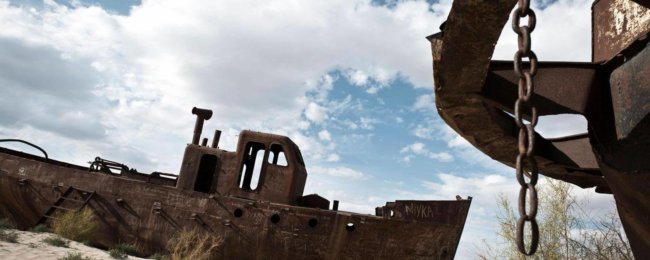
On the Kazakh-Uzbek border, surrounded by miles of toxic desert, lies the island. Or what’s left of it. During the cold war, the Renaissance island was a top secret Soviet testing ground for deadly bacteria. It took more than twenty years, both forgot about it, but the Soviet legacy continues to live. Once the Renaissance island was home to a lively fishing village, bordered by a turquoise lagoon when the Aral sea was the fourth largest in the world, and abounded in fish.
But for many years of exploitation by the USSR of water diminished and the sea turned into dust; rivers that fed him, was reserved to irrigate cotton fields. Today a layer of salty sand, permeated with carcinogenic pesticides, it is all that remains of the ancient oasis.
It was here in the sandy soil thermometer constantly shows 60 degrees, and the only signs of life are the skeletons of dried trees and camels, decided to lie down among the giant boats. Today, through withered sea, the island of Vozrozhdeniya so swollen that it was 10 times its original size and was connected with the mainland Peninsula. But thanks to one of the Soviet projects, he remains one of the deadliest places on the planet.
Since the 1970s years, the island was involved in a number of sinister incidents. In 1971, the young scientist fell ill after the research ship “Lev Berg” passed through the brown haze. After a few days she was diagnosed with smallpox. Which is weird, because she’s been vaccinated against smallpox. And although she recovered, the outbreak has infected nine people in her home town, of whom three died. Among them was her younger brother.
A year later, near the scene found the bodies of two missing fishermen, drifting in the boat. It is believed that they caught the plague. Shortly thereafter, locals began to catch the whole network dead fish. No one knows why. Then, in may 1988, killing 50,000 saigas that graze in the adjacent steppe – literally overnight.
The mysteries of the island are well preserved, partly because this place is not so easy to prove. Since then, as the island of Vozrozhdeniya was abandoned in the 1990-ies, it was only a few expeditions. Nick Middleton, journalist and geographer at Oxford University, filmed a documentary in 2005. “I knew about than to have to deal with, so we brought a guy who worked for the British military, so he filled me in on what we can find on the island. To be honest, it scared me to useru”.
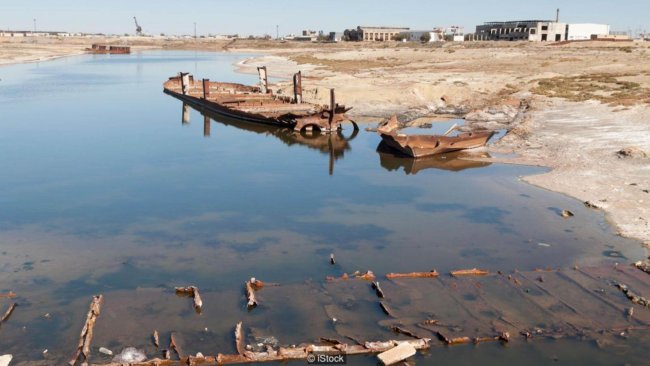
The expert was Dave Butler, who eventually went with them. “Many things could go wrong,” he says. A week before the trip, Butler pumped up the whole team with antibiotics. They also put on gas masks with high-tech filters, thick rubber boots and white costumes, like the CSU.
They were not paranoid. The aerial photograph of the CIA in 1962, showed that at that time, as on the other Islands were the docks and fishing huts on this island, shooting range, barracks and parade ground. But that’s not even half of the island. Was research buildings, corrals for animals and a Playground for testing outdoors. The island was turned into a military base the most dangerous type: polygon testing of biological weapons.
The project was absolutely secret, he wasn’t even on the Soviet maps, but knowing called him “Aralsk-7”. Over the years this place has turned into a living nightmare, where anthrax, plague and smallpox almost clouds enveloped the island, and exotic diseases like tularemia, brucellosis and typhus was spilled and seeped into the sandy soil.
The island was fairly well isolated, so found it only in the 19th century and immediately saw it as the perfect place to hide the dark deeds from the eyes of Western intelligence. Surrounding an island of the sea provided a natural moat.
These factors have led to the fact that the island was chosen as the final burial place of the largest inventory of anthrax in human history. Its origin remains unclear but it is possible that the lethal stock was made near the city of Sverdlovsk, now Yekaterinburg.
“Aralsk-7” was part of a program of biological research on an industrial scale, which involved more than 50,000 people at 52 manufacturing facilities in the Soviet Empire. Anthrax was produced in huge fermentation vats, gently nurturing like brewed beer.
In 1988, nine years after the leak of anthrax (the so-called anthrax), place of production, which led to the deaths of at least 105 people, the Soviet Union finally decided to get rid of inventory. Huge vats of anthrax was involved with bleach, and taken to the port city of Aralsk on the shores of the Aral sea. There they were loaded on barges and towed to the island of the Renaissance. About 100-200 tons of anthrax slurry hastily dumped into pits and forgotten.
Most of the time the anthrax bacterium spends in the form of a dispute, the inactive form with extraordinary powers of survival. It can withstand almost anything from a bath with powerful disinfectants to heating at 180 degrees for two minutes.
Being buried in the ground, spores can live for hundreds of years. In a separate case, they were recovered from archaeological excavations on the ruins of a medieval hospital in Scotland – with mnogosotletnim the remains of lime, which tried to kill anthrax spores.
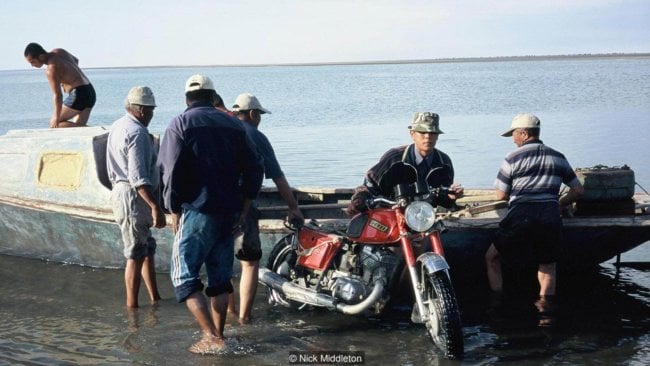
Recently, 12-year-old boy has died after being infected with anthrax, which was hidden in the far North of Russia. In the outbreaks were hospitalized 72 people from a nomadic tribe of Nenets people, including 41 children, and thousands of deer died. I believe that it all started with the fact that due to the heat thawed out the carcass of a reindeer, which were at least 75 years.
As expected, the efforts of the USSR to rescue the island’s Revival was not enough. Years after the collapse of the Soviet Union, against attacks in Tokyo and the revelations about the extensive program of biological testing in Iraq has raised concerns that terrorists or governments-the rogue can somehow gain access to biological weapons. Therefore, the US government sent a team of experts to conduct research.
The exact location of the burial sites of anthrax has never been revealed, but as it turned out, was no problem at all. The pits were so huge that they were visible even on satellite images. Viable spores were detected in several soil samples, and the US promised $ 6 million for a project to clean up this place.
All that is needed to make the team to move several tons of contaminated soil dug out near the pit of the trench at a temperature of 50 degrees, while in protective suits. Total has hired 100 local workers, and the project took four months.
Worked. After heating for six days with powdered bleach spores were killed.
But the story was far from complete. Fifty years of testing outdoors has resulted in contamination of the entire island, not just polygon. “Anthrax is not going anywhere, it’s not a problem” says Les Bailey, an international expert on anthrax from Cardiff University. He spent ten years working at the former research facility for biological weapons at Porton Down.
And – burial pit with infected animals, hundreds of corpses; the unmarked grave of a woman who died of infectious agent decades ago. “Even when you bury an animal, you have to bury it to a depth of several meters. If the area is flooded, the debate going back and earthworms will carry them on the ground,” he says.
Remarkably, there is a similar place, a little more comfortable than the steppes of Central Asia: Gruinard, a small island just off the coast of the Scottish highlands. From 1942 to 1943, just one year, there was the epicenter of the program tests the British biological weapons. Tests included the binding of sheep in an open field or fixing them to wooden frames to those exposed to high doses of anthrax. Once it blew over the island; another was thrown from the plane.
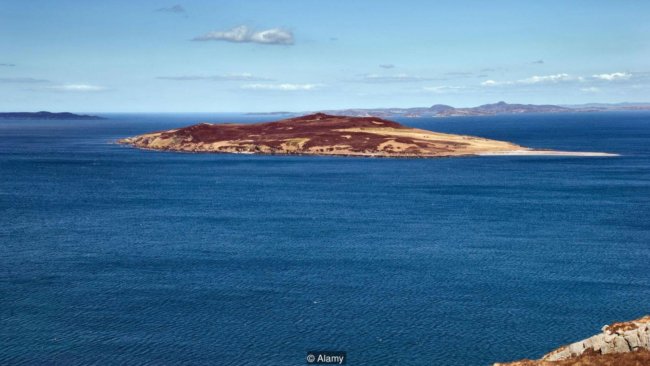
Sheep began to die in three days. “Once it is clear that the animal died of anthrax. Enough to see the bloated carcass of a hemorrhage,” says Bailey. Then the carcass was carefully removed. Scientists burned the body, and even blew up the rock to cover the dirt.
Only one set of experiments led to the fact that the island became so contaminated that the initial efforts to clean it have failed and was abandoned.
The only people who went there half a century later, there were scientists from Porton down and two brothers, Flatts from the mainland. They have annually completed 10-minute trip across the sea to repaint the warning signs, and wore protective suits.
Soil samples taken in 1979 showed that almost forty years later was still from 30 000 to 45 000 spores per gram of soil. Proposals to deal with the “infected monster”, as it became known, ranged from complete concreting before the removal of topsoil and dumping it in the North Atlantic.
In the end, every inch of the island with an area of 1.96 km was Opalen 280 metric tons of formaldehyde solution mixed with sea water. In 1990 the island was declared secure. Today it can be easily reached by boat, but will have to try to convince someone to take you with me.
Fortunately, the Renaissance island to get not so simple. To get there, Middleton, Butler and their team crossed Kazakhstan to the village of Koyilandy. The plan was to hire a boat that will take them through the Aral sea, and several guides. Of course, the locals do not particularly want to visit the infamous island. “They knew that you need to stay away,” says Middleton. In the end managed to enlist the support of a group of looters, oddly enough.
The trip had to be postponed because the crew had caught food poisoning. A few hours later when they were ready to leave, went a strong dust storm that engulfed the village and the Aral sea. “It seemed like the end had come. We were in the center of the storm in these shaky boats. I don’t think will survive.”
The next day they finally did it. The base was divided into two parts: city Kantubek built to accommodate scientists and their families, and laboratory complex, which was located about 3.2 kilometres to the South.
“When we got there, we had to be quiet,” says Butler. The team arrived from Kazakhstan, because to get a visa in Uzbekistan has been difficult – even though there is a base. Island crossed the desert on a motorbike went without cards. “I think it focused on the sun,” says Butler. Wore full protective suits.
Although everyone was aware of the danger, a gang of looters have been in the city several times, cut copper wire, twisted bulb, proceed on a city and looking for something to sell.
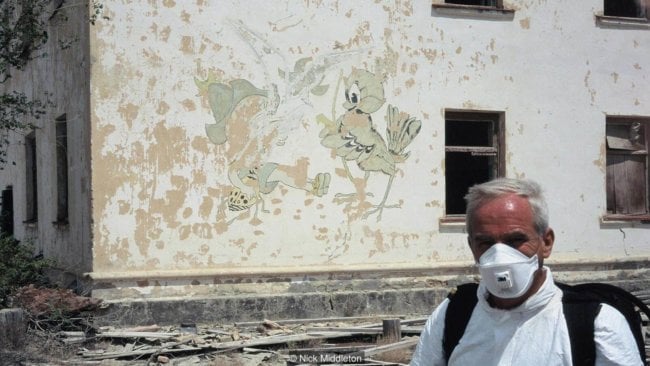
Today Kantubek is a Ghost town where signs of life are contrasted with something frightening. On the one hand, there is the house, a dining room and several schools; on the other — broken portraits of generals, books of Marx and Lenin and rusty tanks. “It’s strange because you can smell the sense of decay, but there are unexpected elements, like a large painting of a cartoon duck on the Playground. There are no birds or insect – there is complete silence.”
The local gang was anxious to leave the island, so the crew did not stay long. They went in search of the laboratory complex. “They took us to the front door of this place and said I would wait outside. They would not go in,” says Butler.
So there were Field research laboratory, research laboratory, which turned out to be very frightening. “The research building had not been cleaned at all,” says Middleton. “It looks like they just threw the garbage and left.”
Huge glass tanks of hazardous substances are lined up against the wall, and the floor was covered with hundreds of thousands of broken glass bottles, pipettes and Petri dishes. Discarded costumes protection complete with alien-looking masks and air hoses were everywhere. The whole place was like the scene from post-apocalyptic video games.
Here Butler ordered the team to wear more than a full breathing apparatus to filter the air. “Buildings tend to accumulate substances,” says Butler. In addition to floating in the air anthrax, the team came in a cloud of formaldehyde, which is carcinogenic when inhaled.
Sense of control was short-lived. “We stayed there for 15 minutes, and the canister started to fizzle out,” says Butler. When the air filter is congested, the first bell becomes the essence of a noxious scent that was able to slip. “This can happen if you run into a real corrosive industrial chemical in concentrated amounts”.
Whatever it was, it was decided to leave and quickly. Butler was happy to visit the test site and the next day, but others had already seen. “I was extremely interested – I had the chance to apply all the knowledge I had into practice. I myself think it is weird.”

As a further precaution, Butler took nasal swabs from each team member and checked them for the presence of anthrax spores. He had every reason to worry. There are a few ways to die from anthrax, and the terrible features of each of them depends on how exactly you were infected. There are gastrointestinal tract, which is common among grazing animals like cattle, horses, sheep and goats, and it still leads to the death of people in developing countries. Symptoms vary, but usually include vomiting, diarrhea and damage all the way from the mouth to the intestines.
Sometimes one skin contact is enough. In the 19th century in Yorkshire, the so-called “disease of wool” was a professional hazard for people working in the textile industry.
But the unpleasant outcome would be inhalation of spores. As soon as a dispute breaks into the body, first it rises in the lymph nodes. There the spores begin to hatch and reproduce and eventually evolve into the bloodstream and result in widespread tissue damage and internal bleeding. It is believed that the entire process can take several months, but in the end, eight of the ten patients already dying.
“This has to be the perfect biological weapon,” says Talima Persons, a biologist at Northern Arizona University, who helped to sequence the strain that caused the outbreak in Sverdlovsk. “And they pulled it out of the wilderness”.
Not everything is presented normal with anthrax. “Aralsk-7” built in the midst of the race Bioorganic between the US and the UK. And without that deadly pathogens have become, thanks to the scientists, even fiercer, tarsialignea, deadlier. Bacteria were made resistant to antibiotics, and viruses could infect even those who have already been vaccinated.
For this purpose, the pathogens found in nature, grown in commercial quantities and was tempered to the desired characteristics. “The more material, the more chances that you will find what you need,” says Bailey.
April 10, 1972 three participating countries signed a Treaty calling for the rejection of the testing of biological weapons. At this moment the Soviet Union began the most terrible program. Henceforth the USSR will use molecular genetics. Biological weapons will be developed, not just to be cultivated.
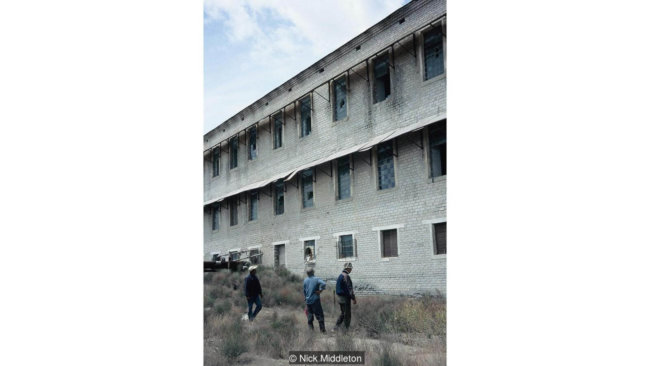
And here appeared a particularly nasty strain of anthrax, known to researchers as the STI. First, he was resistant to an impressive set of antibiotics, including penicillin, rifampin, tetracycline, chloramphenicol, macrolides and lincomycin. But this is not all the delights of this strain.
As if the usual were not enough anthrax: the scientists decided that natural killer needs more weapons – toxins that can break the red cells and cause human tissue to rot. Scientists took genes from a close relative of anthrax, Bacillus cereus and added them using the latest scientific methods.
Anthrax usually grows in clumps, but they can’t always get into the nostrils and lead to infection. Therefore, in the USSR crushed them using industrial equipment. The end result was only five micrometers in length – 30 times smaller than the width of a human hair. “Perfect size for inhalation,” says Butler.

Before the team went to the island, Butler has constructed a decontamination area on the beach – in fact, an outdoor shower and wrapped antibacterial soap. Upon return, each team member stripped naked and scrubbed himself clean. “We had to ensure there was no dispute in the, ahem, hairy parts of our bodies,” he says.
Fortunately, the smears showed negative result and even the rescuers who refused protective gear to avoid infection. At the moment anthrax in the Renaissance island remains in the ground.
But what with the mysterious outbreaks in the 1970-ies and 80-ies? We now know that “Lev Berg” came in an aerosol cloud “battle” of smallpox, which was recently blown up on the island. The incident was hushed up by the Soviet authorities of that time, largely by the decision of Yuri Andropov, then chief of the KGB. No one knows what kind of strain caused the infection, but, according to David Evans, a virologist at the University of Alberta in Canada, it likely was “India-1967”.
“We know that, because this strain was sequenced in the USSR,” says Evans. “They used the old-fashioned method, which required astounding amounts of DNA, so there was a sense that this strain is later to make weapons.”
It was extremely dangerous strain is first taken from an Indian, who was brought to Moscow in 1967. There are two possible reasons of the infection of those who have already been vaccinated: the vaccine did not work or they have been subjected to a high dose.
“To the Soviet vaccine was constant complaints, so maybe it is not working properly,” says Evans. “The extremely high dose of anything can overcome the immunity.” If the vaccine didn’t work, “India-1967” automatically became a dangerous virus.
Can the island be contagious today? “No, long gone,” says Evans. In Russia recently uncovered burial of victims of the smallpox epidemic in Siberia, where melting permafrost has exposed their graves. Although the bodies were completely frozen over 120 years, the researchers found no virus — only his DNA.
Evans is working on a vaccine for the virus, which is similar, but only causes skin infections. “Even in my lab where we keep it at a temperature of -80 degrees, in ideal conditions, the virus slowly loses effectiveness over time.”
With regard to plague, although the Soviet Union worked to create weapons based on it, these bacteria remain widespread in Central Asia to this day — indeed, the number of cases increased sharply after the collapse of the Soviet Union. What do we have left? Only fish and antelope. Both cases remain a mystery, but widespread pollution of the Aral sea at that time and later a massive waste of saiga assume that both options have alternative causes.
So, a forgotten island became an island of degeneracy. But name it is quite another. Justify whether the Renaissance island ever?
On materials BBC
“Island of extinction”: in the USSR were established and were buried biological weapons
Ilya Hel